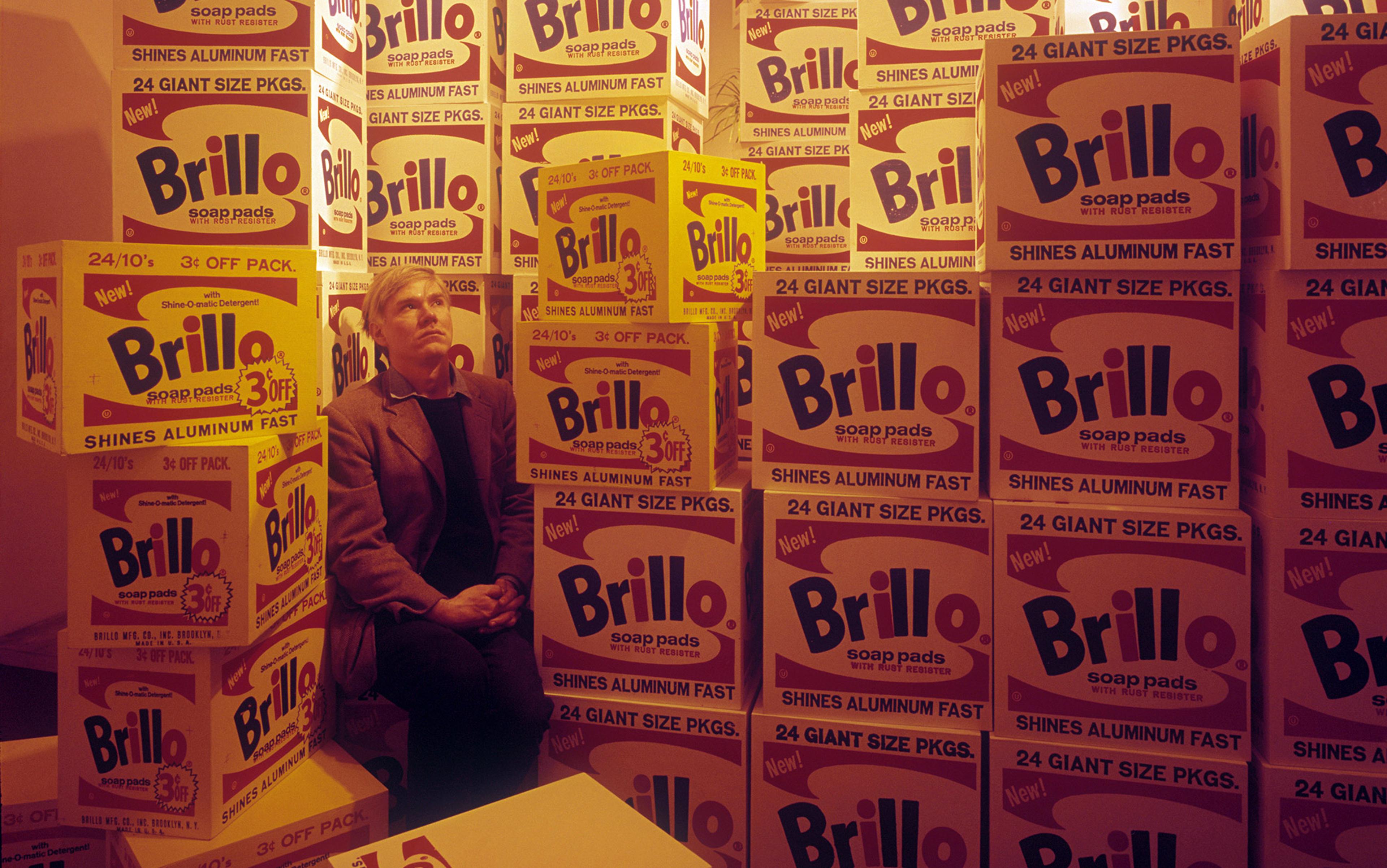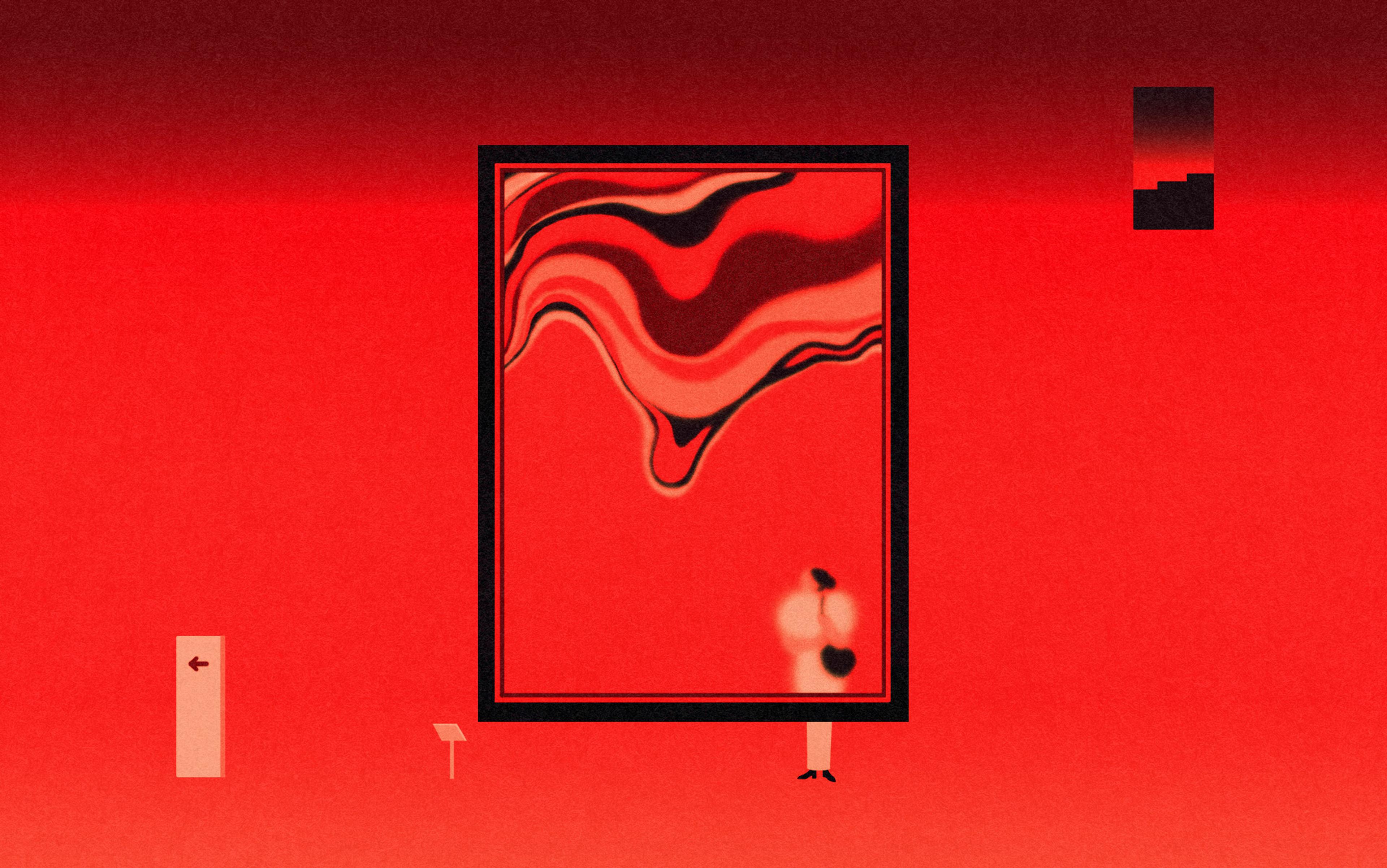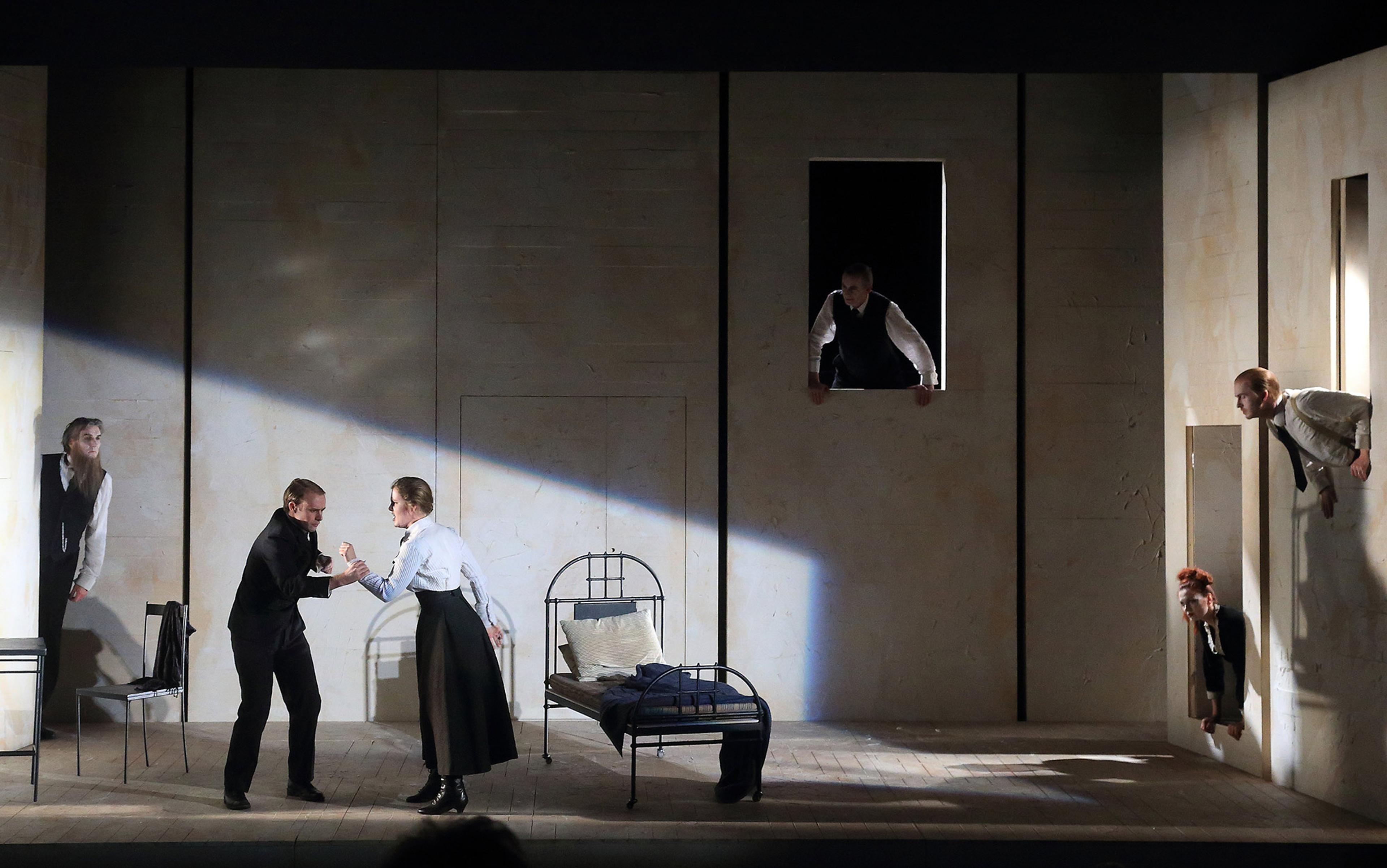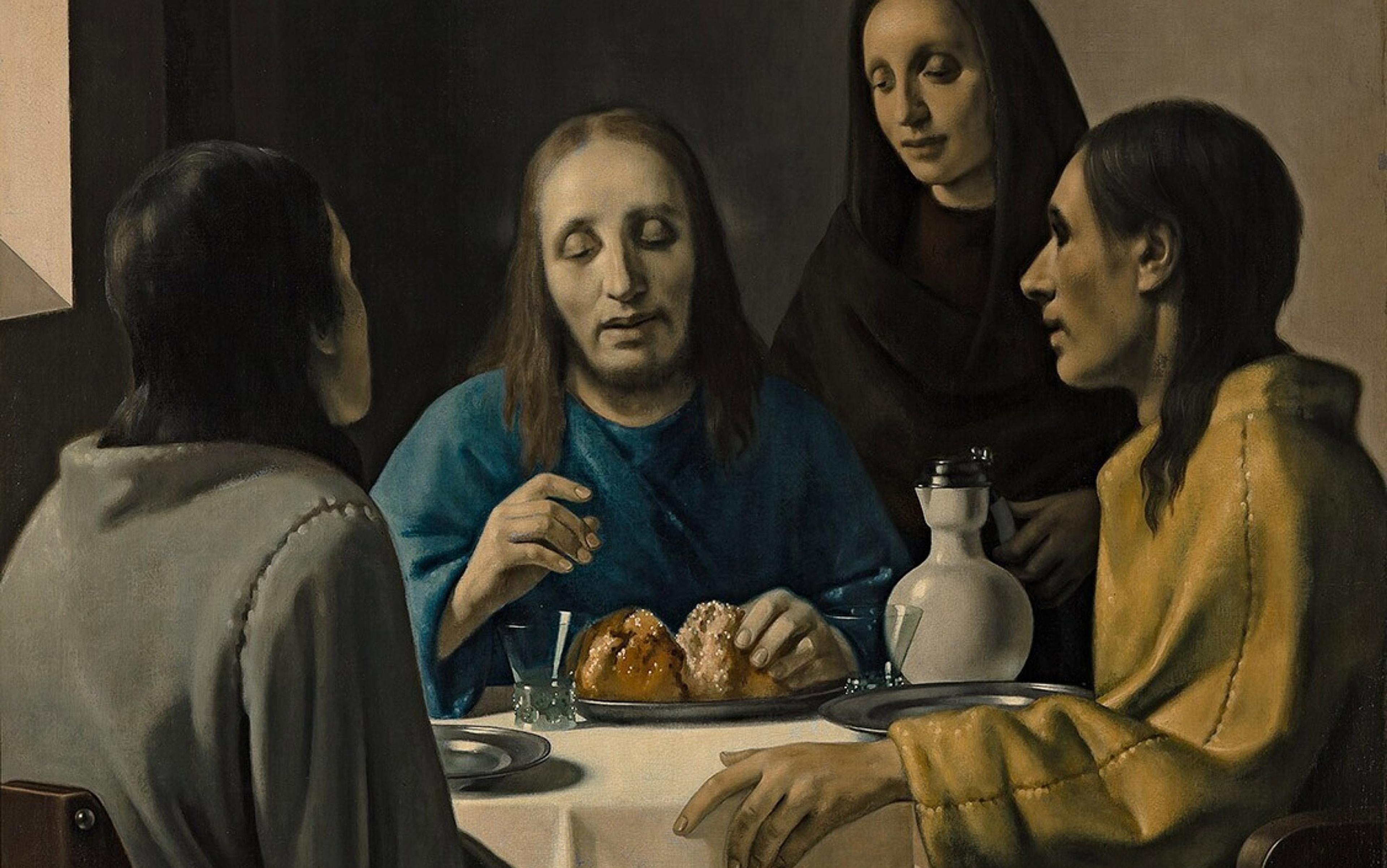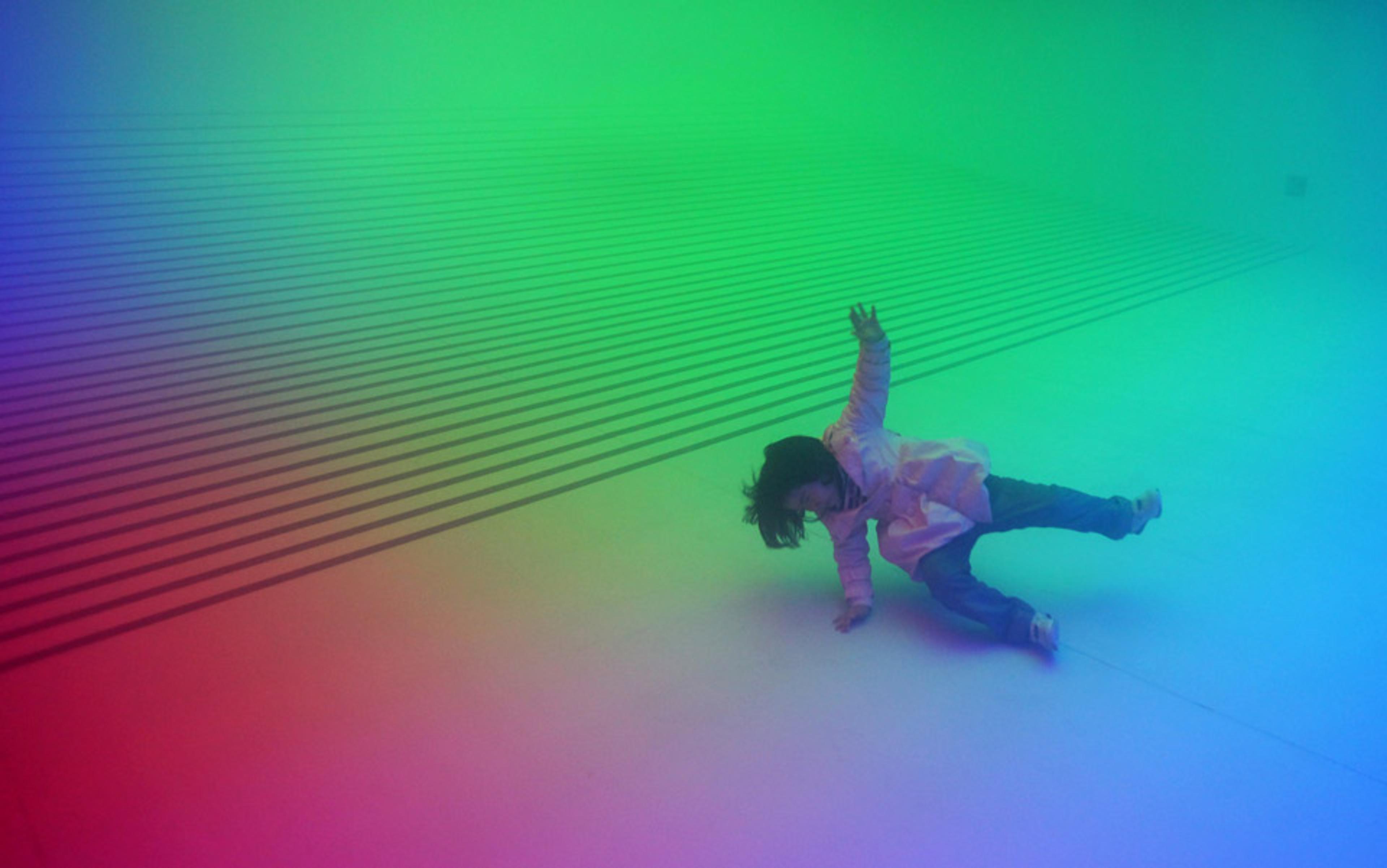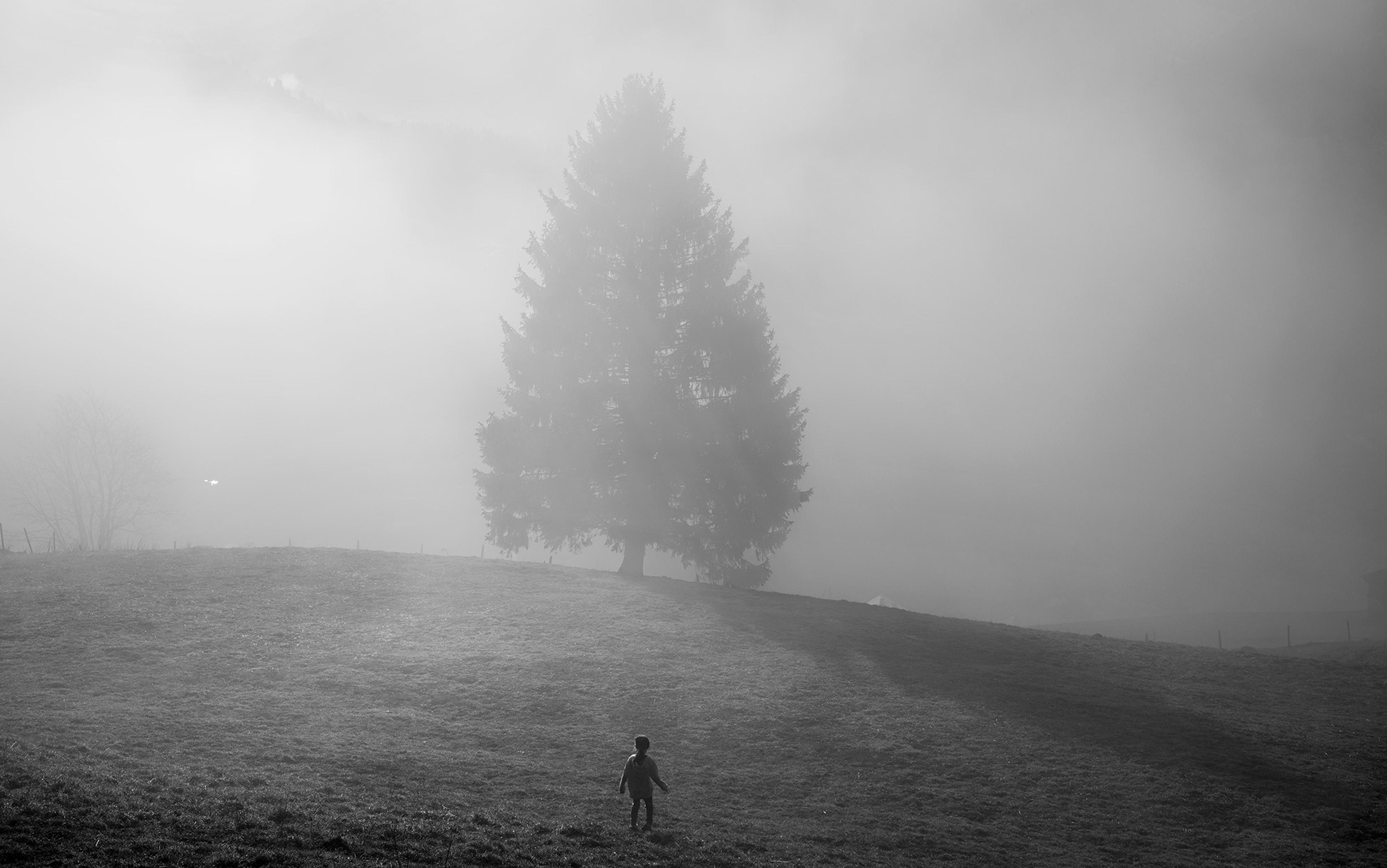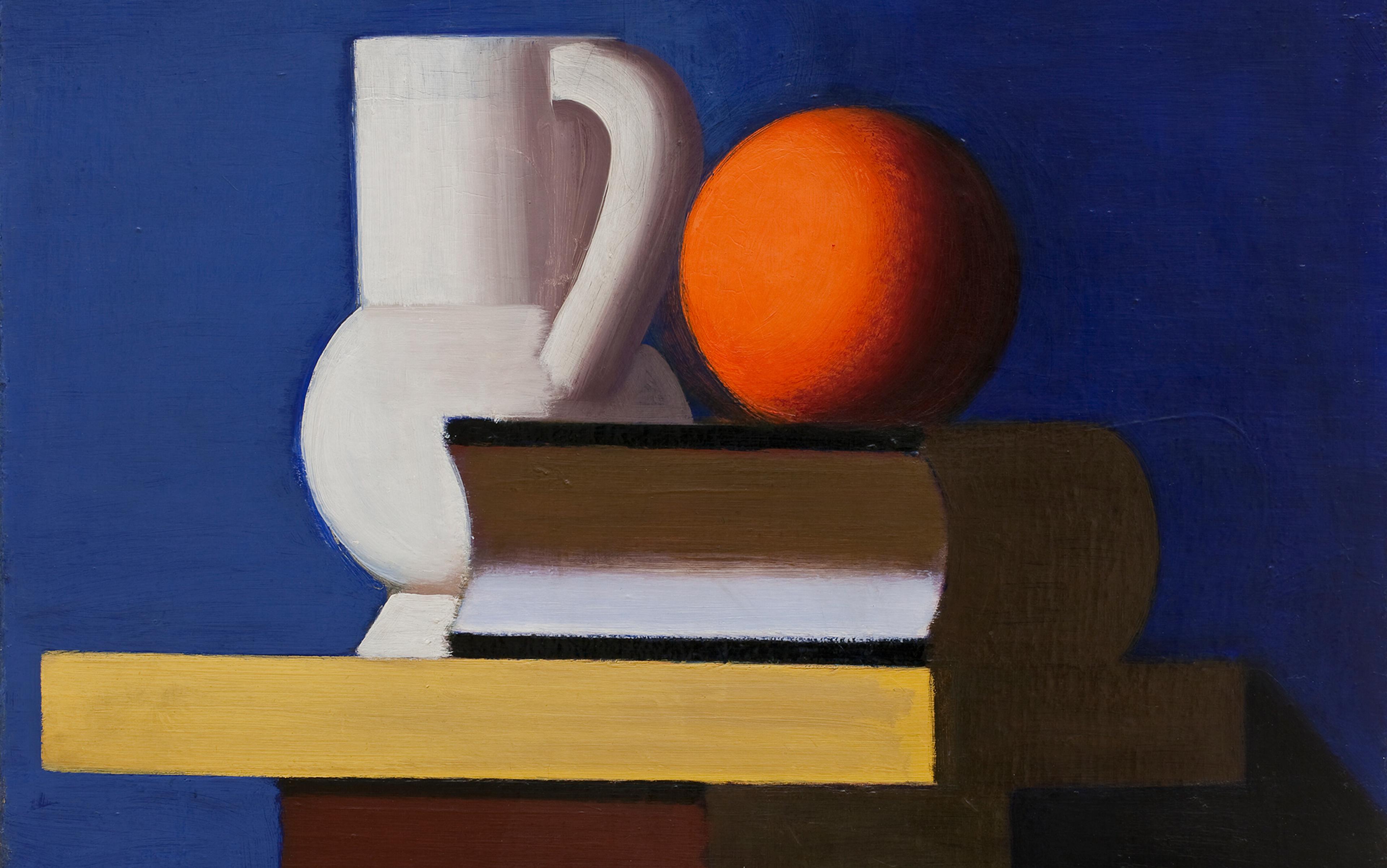There are more artworks, and more types of artwork, being produced than ever before. Galleries are widespread and – in some countries – free. Major art prizes, and major artists, receive frequent press attention. With all this abundance, it seems nonsensical to suggest that art had ended. It’s not clear that the claim even makes sense – how could art come to an end?
But this idea is not as obviously wrong as it seems. Talented and insightful philosophers of art have taken this claim quite seriously, even while acknowledging that artworks will continue to be produced in larger numbers, and in new and exciting ways. When these philosophers claim that art has ended, they are not saying that there will be no new artworks. Their claim is quite different. They are telling us that art has some kind of goal, or line of development, which has been completed; plenty more will happen in art, but there is nothing left to achieve. Just as Francis Fukuyama claimed in 1989 that history had ended – meaning not that nothing more would ever happen, only that all ‘viable systematic alternatives to Western liberalism’ had been exhausted – so too some philosophers claim that art as a practice will continue, but has no more ways of progressing. Two of the more prominent philosophers to have made this sort of argument were G W F Hegel in the early 19th century, and Arthur Danto in the late 20th century.
Hegel was, in many ways, the father of what we now call the history of art. He gave one of the earliest and most ambitious accounts of art’s development, and its importance in shaping and reflecting our common culture. He traced its beginnings in the ‘symbolic art’ of early cultures and their religious art, admired the clarity and unity of the ‘classical’ art of Greece, and followed its development through to modern, ‘romantic’ art, best typified, he claimed, in poetry. Art had not just gone through a series of random changes: in his view, it had developed. Art was one of the many ways in which humanity was improving its understanding of its own freedom, and improving its understanding of its relationship to the world. But this was not all good news. Art had gone as far as it could go and stalled; it could, according to Hegel’s Lectures on Aesthetics (1835), progress no further:
the conditions of our present time are not favourable to art […] art, considered in its highest vocation, is and remains for us a thing of the past.
In 1835, Hegel claimed that art had ended. Almost exactly 10 years later, the German composer Richard Wagner premiered Tannhäuser in Dresden, the first of his great operas; the beginning in earnest of a career that would change musical composition forever. Less than a century after Hegel’s claim, the visual arts saw the onset of Impressionism, Cubism, Surrealism and Fauvism, among other movements, and literature, poetry and architecture were deeply changed by Modernism.
In 1964, Danto attended an exhibition at the Stable Gallery in New York. He came across Andy Warhol’s artwork Brillo Boxes (1964) – a visually unassuming, highly realistic collection of plywood replicas of the cardboard boxes in which Brillo cleaning products were shipped. Danto left the exhibition dumbstruck. Art, he was convinced, had ended. One could not tell the artworks apart from the real shipping containers they were aping. One required something else, something outside the artwork itself, to explain why Warhol’s Brillo Boxes were art, and Brillo boxes in the dry goods store were not. Art’s progress was over, Danto felt; and the reign of art theory had begun.
We could ask ourselves whether these claims were false – but a better question is, what would it mean for these claims to be true? What do philosophers mean when they say art has or will come to an end? Is it just hyperbole? And why does art keep ending, for philosophers, while the rest of us see it carrying on, taking new directions?
In his Analytical Philosophy of History (1965), Danto drew attention to two different kinds of endings. We might claim that a narrative has ended; or we might say that a chronicle has ended. This is an important distinction. A narrative has a kind of structure – for example, I might describe to you how I (in some other possible world, alas) learned to manage my money properly. I would begin by describing the debt I fell into, and the advice I sought; the strategies I learned from certain books; and the tricks I employed to keep track of my outgoings. It would be a story about how I solved a certain problem; and once the problem was solved, the story ends.
A chronicle, by contrast, is just a series of events, with no structure – the events simply follow one after the other. The chronicle of my life includes every event that occurs in it – no matter how trivial – and will end only when I die. A chronicle ends only with the disappearance of the thing we are describing.
For art to end, then, is for art to be released. It no longer had to grind away at solving a task
For Hegel, and Danto, art’s narrative had ended; it had progressed as far as it could in solving the task it had set itself. But art’s chronicle would never end: there would be new artworks for just as long as there were human beings to create them. Art’s end, in this sense, was a good thing. Art was released from labouring away at a task (given by the narrative); it was now free to be anything. For Hegel, art could revisit and re-use all the many tools and techniques the history of art had thrown up, and recombine them at will:
In this way, every form and every material is now at the service and command of the artist whose talent and genius is explicitly freed from the earlier limitation to one specific art-form.
For Danto, likewise, the artist should be overjoyed, and not discouraged, by the end of art. In The Philosophical Disenfranchisement of Art (1986), he wrote:
As Marx might say, you can be an abstractionist in the morning, a photorealist in the afternoon, a minimal minimalist in the evening. Or you can cut out paper dolls or do what you damned please. The age of pluralism is upon us. It does not matter any longer what you do, which is what pluralism means. When one direction is as good as another direction, there is no concept of direction any longer to apply.
For art to end, then, is for art to be released. Art no longer had to grind away at solving a task. But this still leaves the unanswered question: what does it mean for art to have a task?
Hegel’s answer to this question is complex. Its central motor is the claim that human life, including human culture, is underwritten by a collective principle of self-consciousness, known as Geist. (Geist, a notoriously tricky German term to translate into English, is most often rendered as ‘mind’ or ‘spirit’.) It is Geist’s task – developed across world history – to refine and complete its awareness of its own freedom, and its awareness of itself. The more this process of refinement progressed, the more abstract and conceptual it became. In the historical period that Hegel roughly identified with Ancient Greece, this self-awareness could find perfect embodiment in ‘classical art’. In Hegel’s words, art could achieve a ‘free and adequate embodiment of the Idea in the shape’.
However, as this self-awareness became more complex and abstract, it developed beyond art’s capacities for expression. Consequently, art could no longer push forwards the development of Geist. This task fell to the more discursive and conceptually complex spheres of religion and philosophy (the most adequate expression occurring in – to the surprise of no one – Hegel’s own philosophy!). Art, as a means of eliciting progress in the task of articulating Geist and its self-consciousness, became superseded, and no longer of use in this task.
Hegel’s idea of history as having a kind of narrative structure, a movement in stages towards a goal, is likely less compelling to us than it was to those of his contemporaries who claimed to understand it. But the idea that art is perhaps best understood as a practice exhibiting a narrative survives as a genuinely interesting idea, and we can make use of it without having to employ Hegel’s more obscure thoughts about history and Geist.
Danto gave just this kind of account: an explanation of the end of art that, though inspired by Hegel, was not founded on his notions of world history and Geist, and was focused on the recent history of art. Danto’s claim was that art’s first task – the first narrative it worked through – was the perfection of verisimilitude; of producing images that presented an exact likeness of their objects. From the painstaking work in Greek sculpture, aided by advances in Greek anatomy (the sculptures Doryphoros, or Myron’s Discobolus, for example), to the progressive use and refinement of optics and the science of perspective in the Renaissance (for example, Masaccio’s use of one-point linear perspective in his Holy Trinity), artists continually improved their ability to depict objects in a lifelike fashion.
These advancements were binding on those who came after – for example, Masaccio’s work with Brunelleschi’s advances in understanding perspective set the tone for the painters who followed, who took up and improved these techniques and generated their own skills and technologies. The camera obscura was later a key technological advancement, in allowing rudimentary reference photographs to be taken (or so the artist David Hockney claims, with growing agreement, based on features of paintings such as Vermeer’s The Music Lesson).
The camera obscura, of course, soon became the photographic camera, which could record virtually perfect likenesses of objects. Art’s innermost goal – its narrative of perfecting representations of objects – had been usurped. It now fell to art, in Danto’s view, to focus on a new question: ‘What is art?’
There was nothing about how Brillo Boxes looked that explained what made them artworks, not containers for scouring pads
Much of what followed in the history of art can be arranged into a neat sequence, on Danto’s account. Art found its former narrative completed, and then embarked on a new one: it now set itself the new task of enquiring into what art itself could be, and what the limits of art-hood were. The outer limits of the ability of visual art to be representation – to embody, and elicit an impression of something outside of the artwork, whether it be an object, a sensation, an experience, or a concept – started to be explored. And we can see the fruits of this approach in the various modern schools and ‘isms’ (Cubism, Fauvism, Futurism, and so on) and in works such as Pablo Picasso’s The Aficionado (1912) and Wassily Kandinsky’s Bustling Aquarelle (1923). But one cannot push at limits endlessly without eventually making them senseless; by 1953, Robert Rauschenberg was exhibiting a drawing by Willem de Kooning that he had completely erased; it was a blank canvas, with (comparatively) little intrinsic visual value – an artistic hint, in my view, that this new narrative was coming to a natural end.
The world of perfect verisimilitude had morphed into the innovative and unusual approaches of the schools and movements that asked what art was, before finally being wiped away altogether in Rauschenberg’s symbolic erasure of another artist’s work. We can see why Danto might find a second narrative, here – an investigation of the limits, and meaning, of art itself. Underpinning the schools and ‘isms’ of modern visual art was a central push to arrive at an understanding of art’s essence – of what it means for an object to be an artwork. And it was Warhol’s Brillo Boxes that alerted Danto to the recent completion of this second narrative.
In Danto’s view, Warhol’s Brillo Boxes were deeply important because they were visually indistinguishable from non-artworks. There was nothing about the way that they looked that explained what made them artworks, as opposed to containers for scouring pads. Art had pursued the question of how to define itself as far as it could go through the way artworks looked; it now required concepts – art theory – to carry forward this task, as the objects alone were no longer up to this task unaided. Just as art had handed over the pursuit of verisimilitude to the camera, so now its search for self-definition had reached the point where it needed to pass on its task to art theory. So, art’s second and final narrative has been completed.
Hegel and Danto believed that art ends under very specific conditions. Their work asks us to see art as having a narrative and a goal; a desired outcome that we can recognise that artists together are working towards to achieve. When we can see no advance in the realisation of this goal, in Hegel and Danto’s view it seems reasonable to argue that art has ended, and no further progress is possible.
Hegel constructed his narrative for art against the backdrop of notions that we might now find hard to accept; on the other hand, Danto showed us that careful study of the history of art made the idea of art having an internal narrative appealing, and fitted the evidence of art history well. If art has a narrative, and a goal, it stands to reason it might one day achieve that goal, and complete its narrative: that it might come to an end. So, the broad idea of art coming to an end is one we cannot easily write off. But perhaps we should look a little closer at this. Even if we accept that individual narratives can come to an end, why think that there could be an end to all narratives themselves? After all, Danto saw art as replacing its first narrative with a second; why couldn’t there be a third one? Even if we agree with Danto that art has gone as far as it can in investigating what it means to be art, why rule out the possibility that art might embark upon a new narrative and find itself a new goal?
Both Hegel and Danto anticipated the art that came after them, but understood it not as progress in a new direction, but as further symptoms of the end of art. Hegel was writing towards the end of the great outburst of creativity known as German Romanticism. He anticipated an increase in the conceptual content of art, a move beyond sensuous art into something radically different. This (incompletely) described many of the features of the great art movements that came after him, which moved away from depicting the world, or conceptual ideas, with complete adequacy, and instead reflected on the very limits of artistic expression itself. Cubism, for example, no longer perfected perspective, or wanted to, but instead interrogated it, and attempted to show us the very limits of the way an artwork might represent something. This can be seen especially in the ‘analytical’ phase of Cubism – for example, in Picasso’s Portrait of Ambroise Vollard (1910).
Hegel and Danto’s discussions of the end of art are clearly Euro- and US-centric – as is this essay
Danto, similarly, was writing at the very tail-end of modernism, and the beginning of what came to be known by many as post-modernism. Danto’s enthusiastic description of the end of art, as he himself realised, captures the essence of what some call art’s post-modern era (though Danto preferred to term it the ‘post-historical’ era). Both Hegel and Danto recognised the clear artistic trends confronting art at their time, and with remarkable foresight predicted, and even influenced, those forms of art that would soon emerge. But both philosophers described this inevitable ‘following after’ as not so much the beginning of a new narrative, but rather the end of all narrative. For both Hegel and Danto, the end of art that each pinpointed was supposed to be followed by the opening up of an endless and unstructured chronicle.
Perhaps each of these philosophers was wedded to an idea of art – of what counts as art; and of what art should do – that no longer applied. Perhaps art keeps ending for philosophers such as Hegel and Danto just because they confuse art, as a changeable, endlessly perfectible practice, with their historically contextualised conceptions of what art must be. All of us are prone to this misplaced essentialism about art. Influenced by the culture and arguments we have been reared within, we insist that art must necessarily be engaged in this set of questions – our set of questions – and lose any sense of progress once these questions are resolved, or found to be dead ends and no longer relevant. When art takes on a different shape, as it did in Hegel’s time, and in Danto’s, we are then prone to understand this to be the final symptom of art’s coming to rest – the end of a final narrative. In fact, this tells us only that our starting principles were more about our own time and culture than we had guessed, and that art resists being summed up in any neat single narrative, and always contains a great many overlapping narratives of its own.
This would be a wonderfully neat and open-handed response to the problem; but is it right?
Hegel and Danto’s discussions of the end of art are clearly Euro- and US-centric – as is this essay. Within these constraints, if we want to resist Hegel and Danto’s conclusions about the end of art – and if we believe that art can still progress and develop – we need to identify some new narrative and goal by which art could now be structured. Can we discern some future form of artistic goal that might emerge, or already be emerging, and once more bind together the free-floating strands of artistic creation into a unified practice with a clear goal? I don’t think we can; at least not yet. This might tell us that some kind of end of art has indeed occurred. Or it might be that we are merely waiting for art’s next narrative, when the goals and aims of art will change yet again in ways we cannot predict.
